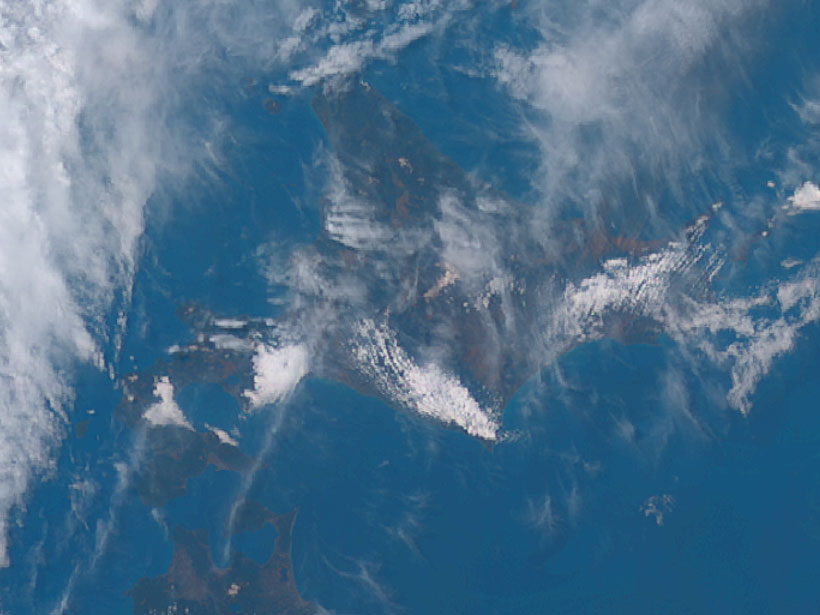
Gravity waves ripple outward from disturbances in the atmosphere, much like the ripples formed from tossing a stone into a still pond. Researchers know that these waves play a critical role in global atmospheric circulation, moving momentum between different layers. But gravity waves are still not well understood. Their small spatial scale and the low resolution of most atmospheric models have historically made modeling the distribution and effects of gravity waves difficult.
In a new study, Matsuoka et al. sought to better define gravity wave parameterizations using machine learning. Gravity waves can be generated by a variety of disturbances, including convection, jet streams, and physical barriers. The researchers focused on orographic gravity waves, or those that radiate out from mountains, in a 1,000-square-kilometer area of the Hokkaido region of Japan. The team trained a convolutional neural network to understand the relationship between conditions in the troposphere, such as temperature, humidity, and low-resolution horizontal wind, and high-resolution wind fluctuations in the lower stratosphere, using a 29-year atmospheric reanalysis data set.
The neural network estimated gravity wave structure, wave number, and the magnitude of the momentum flux. It was most accurate in winter, when gravity waves tend to be stronger. Although most previous models considered only vertical propagation of gravity waves, the researchers note that the deep learning strategy provides a computationally cost-effective way to evaluate horizontal propagation as well. (Geophysical Research Letters, https://doi.org/10.1029/2020GL089436, 2020)
—Kate Wheeling, Science Writer
Source: https://eos.org/research-spotlights/modeling-gravity-waves-with-machine-learning